ThereminGoat
Jan 28, 2025
•6 minutes
Why Are There So Many Mechanical Keyboard Switch Brands?
You've probably come across dozens of mechanical keyboard switch brands by now. Have you ever wondered how we ended up with so many?
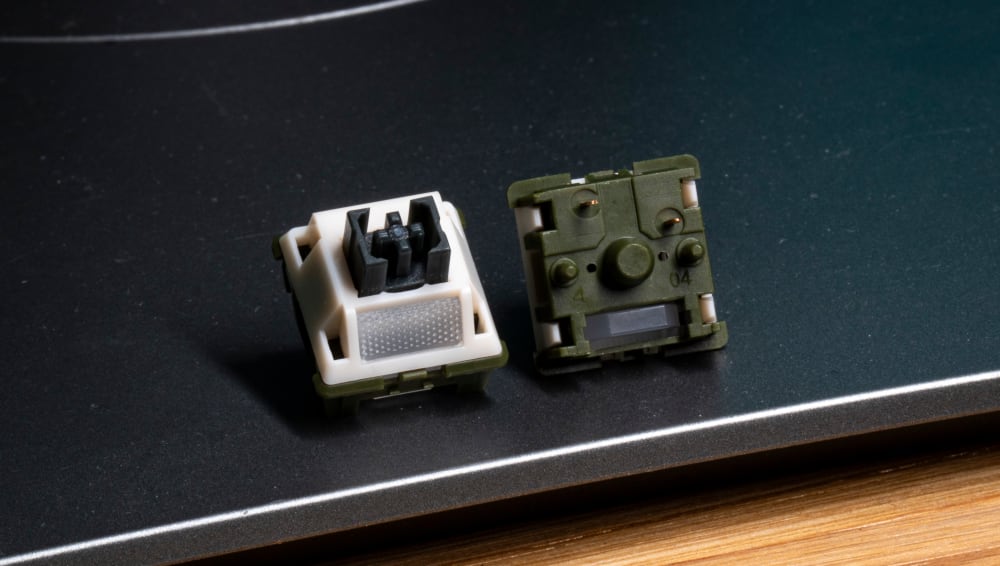

Turtle Silent Tactile Switches
One of the most overwhelming parts of the entire mechanical keyboard hobby for any beginner is trying to make the decision on which single switch out of the thousands available to them should go in their first board. While most of these beginners won’t struggle at all with narrowing in on a keyboard or premium set of keycaps, trying to make sense of all of the different varieties of what appear to be the same switches can be a bit confusing if you don’t know what it is you’re looking at. Depending on where you are looking for switches, you could have the exact same switch marketed as being from the manufacturer, their designer, the vendor that is selling them, or even some combination of all of those three things.
This is on top of the fact that all of these entities will pull from different manufacturers or sell to different audiences seemingly interchangeably. While I can’t promise that I’ll clear up 100% of your confusion around the tricky topic of switch names and brands that exist out there for switches, I feel like I can give you some background context as to how we ended up here and what you can try and do to mitigate your confusion a bit. Let’s walk through a brief bit of history, context, and tips to try and get you more familiar with the array of switch names you’ll see out there.


Gateron Gecko Silent Switches
While the keyboard hobby as a whole stretches back to the early 2000’s, the countless world of MX-style switches and brands does not stretch nearly that far back. From the early 2000’s all the way up to 2018, switches that were available to consumers were exclusively produced by large, OEM style manufacturers that outfitted prebuilt keyboards such as Cherry, Outemu, TTC, Huano, Gateron, and Kailh – all names I’m sure you’ve probably recognized as still being around today. All of the switches produced by these manufacturers back then exclusively had their respective names stamped onto them. At the start of 2018, a couple of vendors reached out to these manufacturers wanting uniquely colored switches to match their keycap sets and board aesthetics.
While the reactions were a bit lukewarm to some of the earliest switches made through these requests – such as the OG Gateron Tangerines, Kailh Novelias, and Gateron Linjars – the appeal of subsequent releases spread like wildfire. Suddenly, nearly every single vendor, brand, and company wanted to seize on this customization opportunity and began asking these companies to do the same for them. Soon, more manufacturers began popping up as well like Durock/JWK, Tecsee, KTT, HMX, LICHICX, SWK, and Grain Gold to try and capitalize on this growing hunger for customized switches as well. Wanting to differentiate themselves from manufacturers just offering unique colorways for switches, these newer manufacturers began offering switches that could be custom branded to any vendor or brand’s logos rather than that of the manufacturer’s.
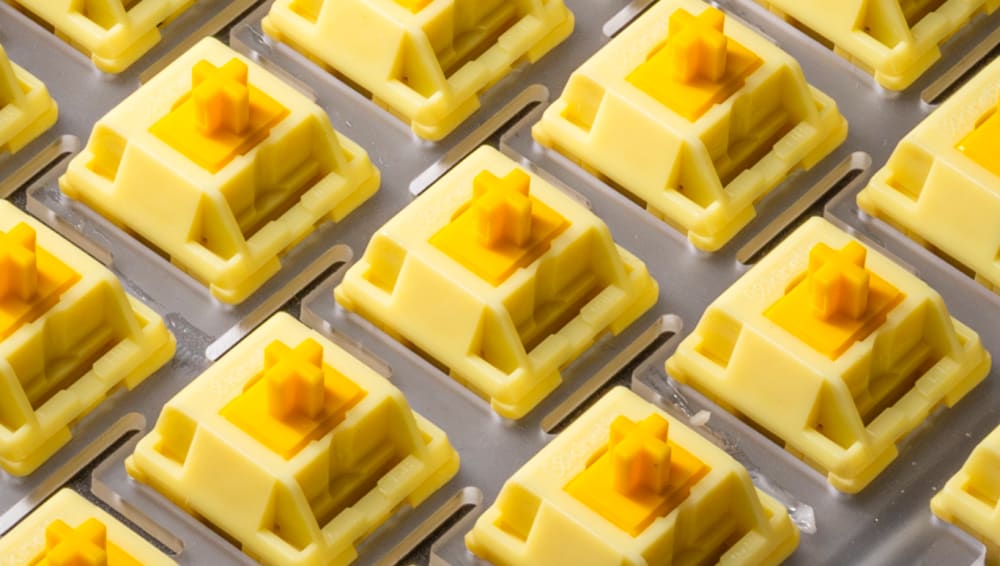

HMX Butter Switches
While Kailh had previously done something similar in a massively expensive deal with Razer long before 2018, it was at this point in time where switches began being produced widely featuring truly customized branding. These custom branded switches without any clear manufacturer markings are exactly why it seems like there’s so many different companies making switches out there today. In reality, it’s only 10-20 companies that are making all of those switches. So if a company is claiming their switches are made by anyone other than the manufacturers I’ve named above, chances are that claim’s not quite true.
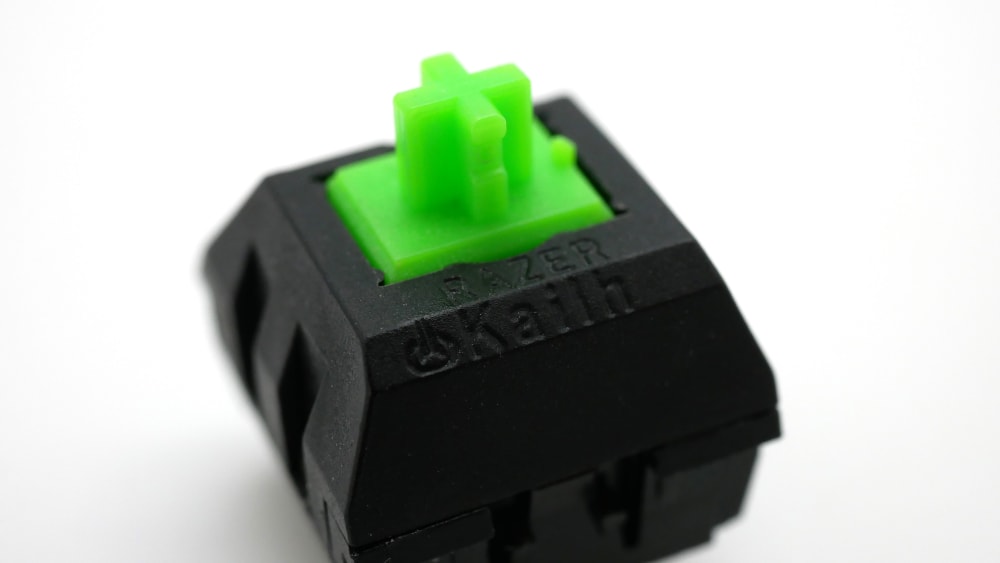

Razer Green Switches
While switches that have been branded specifically for a specific brand of switches or keyboard switch vendor makes for a more confusing environment for beginners, those who spend time learning more about all of the names out there can benefit pretty substantially. At the most rigorous end of the spectrum, dedicated switch collectors and enthusiasts can use these details to both identify the origin of switches when vendors hide who makes their switches and they can also use these details to spot when new brands or manufacturers pop onto the scene. If you’re not wanting to hardcore study switches and their designs, just knowing which nameplates and brand names are associated with high-quality, established manufacturers could help you score cheap deals on insanely good switches or even spot rare, sought after ones too.
For example, Gateron’s budget brand of ‘Everfree’ and Kailh’s budget brand of ‘Long Hua’ are both names that show up on cheap switches made using some of the same machinery and techniques that premium Gateron and Kailh switches are made on. They’re designed to be more budget friendly switches from these companies, despite the fact that you won’t see a lot of marketing reminding you of this connection. If you’re into vintage switches, old Cherry switches have nameplates that have a much more thin, straight, and typewriter-like font to them that is noticeably different than the newer, bubble letter style of Cherry’s newest switches. Being able to spot this difference in passing could allow you to pick up smooth Cherry MX Blacks that are over 20 years old and highly sought after on the aftermarket! While these are a few points to get you thinking in the right direction, keeping an eye out when brands or companies say where their switches are coming from is the only way to continue to grow this knowledge over time. As well, try and make a note of these branding connections when you see the same switches marketed different ways, such as ‘Durock POM Linear’, ‘Durock/JWK POM Linear’, ‘JWICK POM Linear’, etc.
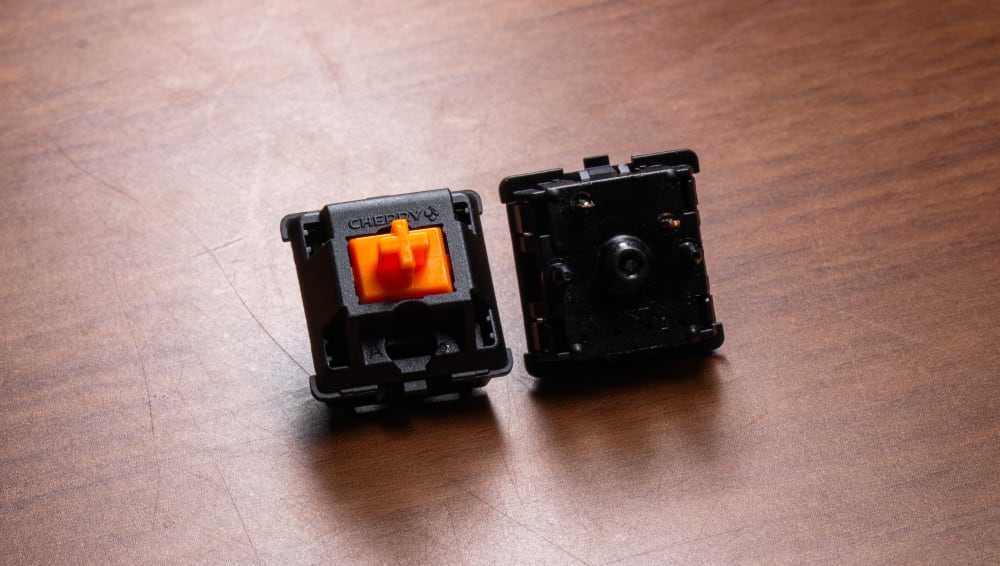

Cherry Orange Switches
One final and incredibly important benefit that you can gain from looking at switch brands and nameplates is that it can usually help to identify keyboard vendors that are dedicated, established, and trustworthy. If a store – like Kinetic Labs for example – has switches branded with their logos or names, then that’s a decent sign they’ve been around for a long time and plan on being around even longer. The physical machine parts and manufacturing costs associated with getting custom logos engraved into a nameplate is rather substantial, so if a company has gone through the steps to do that, then you can generally assume they’ve put serious R&D into developing those switches and making them stand out from their other offerings.
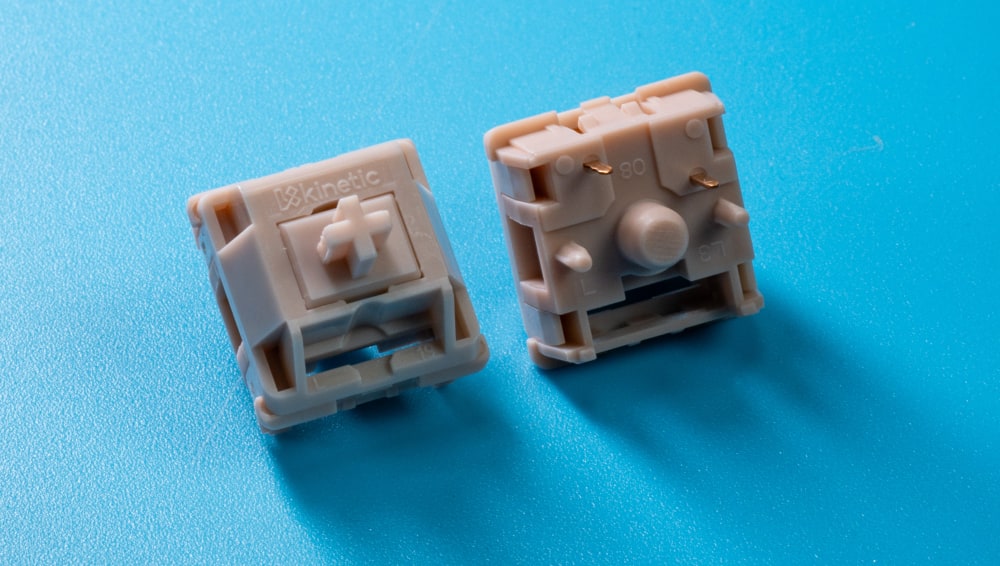

HMX Latte with Kinetic Labs Logo
In addition to costs, vendors that have switches with their own customized branding often have to sign contracts to order thousands of these switches over years, meaning that the specific switches which have their branding are also the switches that will likely be in stock in perpetuity. Unlike buying random sets of switches whose sales pages disappear within weeks and leave you unable to buy more again, you can buy vendor-branded switches, fall in love with them, and can rest assured they’ll be there for your next keyboard build later on.
There you have it – a little bit of background as to why the switch market is as confusing as it is and also a few breadcrumbs to get you thinking more about switch branding and nameplates. Hopefully the next time you’re looking to buy some switches, be them here at Kinetic Labs or elsewhere, you’ll look more closely at the little names on top of them. In the event that you’re also wanting to learn even more about switches and the general market you may encounter before pulling out your wallet, consider reading some of my other guides here on Kinetic Labs such as ‘The Four Common Type of MX Switch Mechanisms’ or ‘What Some Switch Marketing Terms Really Mean’!